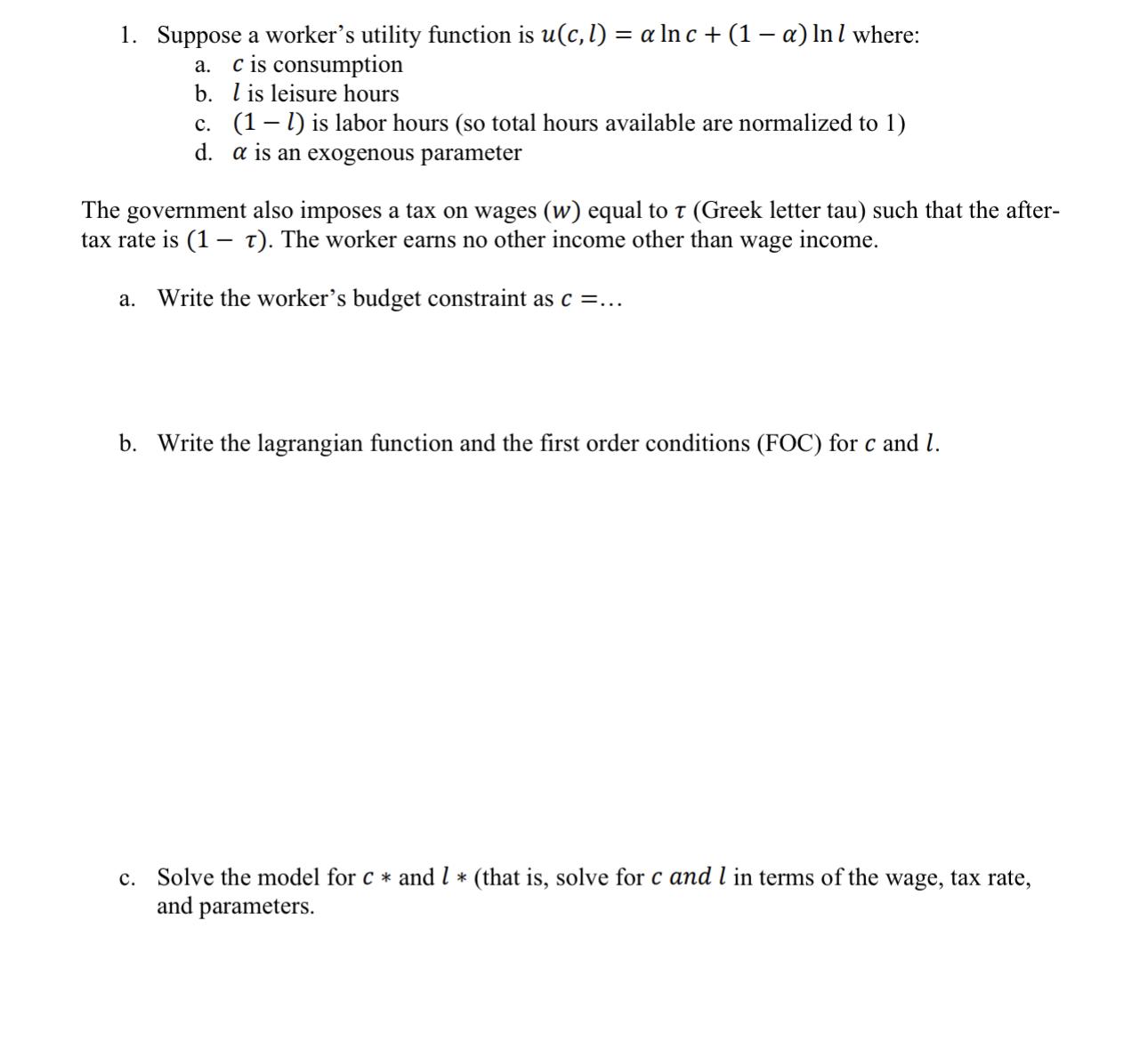Question
1. Suppose a worker's utility function is u(c, l) = ln c + (1 a) In where: a. c is consumption b. is leisure

1. Suppose a worker's utility function is u(c, l) = ln c + (1 a) In where: a. c is consumption b. is leisure hours c. (1) is labor hours (so total hours available are normalized to 1) d. a is an exogenous parameter The government also imposes a tax on wages (w) equal to 7 (Greek letter tau) such that the after- tax rate is (17). The worker earns no other income other than wage income. a. Write the worker's budget constraint as c =... b. Write the lagrangian function and the first order conditions (FOC) for c and l. c. Solve the model for c * and l * (that is, solve for c and I in terms of the wage, tax rate, and parameters.
Step by Step Solution
There are 3 Steps involved in it
Step: 1

Get Instant Access to Expert-Tailored Solutions
See step-by-step solutions with expert insights and AI powered tools for academic success
Step: 2

Step: 3

Ace Your Homework with AI
Get the answers you need in no time with our AI-driven, step-by-step assistance
Get StartedRecommended Textbook for
Microeconomics An Intuitive Approach with Calculus
Authors: Thomas Nechyba
1st edition
538453257, 978-0538453257
Students also viewed these Economics questions
Question
Answered: 1 week ago
Question
Answered: 1 week ago
Question
Answered: 1 week ago
Question
Answered: 1 week ago
Question
Answered: 1 week ago
Question
Answered: 1 week ago
Question
Answered: 1 week ago
Question
Answered: 1 week ago
Question
Answered: 1 week ago
Question
Answered: 1 week ago
Question
Answered: 1 week ago
Question
Answered: 1 week ago
Question
Answered: 1 week ago
Question
Answered: 1 week ago
Question
Answered: 1 week ago
Question
Answered: 1 week ago
Question
Answered: 1 week ago
Question
Answered: 1 week ago
Question
Answered: 1 week ago
Question
Answered: 1 week ago
Question
Answered: 1 week ago
Question
Answered: 1 week ago
View Answer in SolutionInn App



